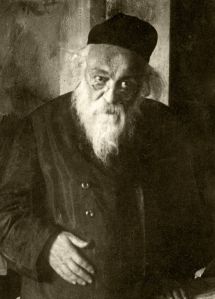Due to the space limitations of a text message, please note that it is particularly important to read carefully, pay close attention to the context of the question, and use the answers as a springboard for further study.
If you would like my phone number to submit questions, please leave a comment and I will send it to you.
Q: I am not a bechor, but I fast anyway on Taanis Bechorim (Fast of the Firstborn) on behalf of my firstborn son. I am not going to be able to attend a siyum this year. Is it true that I am obligated to fast for my son?
A: I did not find any dissenting opinions regarding the minhag for a father to fast for his firstborn son. However there are several options:
Option 1: Fast
Option 2: Learn Maseches Tamid – the shortest masechta – and make your own siyum
Option 3: “Redeem” the fast, i.e. give tzedaka instead of fasting. This is discussed by the Rama in the end of 334, and R. Avigdor Nebentzal suggests (in his edition of the Mishna Berurah) it in several circumstances regarding the fast of the Bechorim.
Option 4: Mishna Berurah says one may rely on Rabeinu Yechiel’s opinion when necessary. (Mordechai states in the name of Rabbeinu Yechiel that the custom of the firstborns is only to refrain from eating bread and other baked goods, but meat, fish, fruits, vegetables, and the like are permissible.)
I’m not sure if option 3 or 4 is preferable.
Q: Is it OK to serve at the seder meat that was braised and then cooked in liquid (3/4 of the meat will be immersed)?
A: Yes that is allowed. Even according to the standard approach to the custom of not eating roasted food on the seder nights, cooking in a pot with any amount of liquid is ok since it’s considered cooking by the halacha rather than roasting (this is the implication of MB 476:1 ) even though people commonly refer to this as roasting. Aruch Hashulchan (476) would certainly allow it. He argues that since the Korban Pesach would be invalidated if it was cooked in a pot without any liquid it is therefore even permitted to eat meat cooked in a pot in its own juices without any additional liquid whatsoever.
Q: If I need to daven in an airport, can I use the non-denominational chapel?
A: According to R. Moshe Feinstein, it is permitted (Masores Moshe. Some authorities are strict (they consider it a place of idolatry since it is designated for all faiths, some of which are avoda zara (Halachos for the Traveler by R. Donneal Epstein), but they may have looked at it differently had they known R. Feinstein’s opinion which was published posthumously, after the publication of the former book).
Q: Hot meat stew was transferred into a serving dish, then placed on a glass dairy plate. The plate was used for hot food within 24 hours but it was pareve. Do the plate and silverware need to be kashered?
A: Nothing needs to be kashered (since the plate and silverware have a halacha of keli shelishi which is not hot enough to transfer taste. Even though the stew contains pieces of solid food, it doesn’t have a “davar gush” status due to the liquid that surrounds it (Pischei Teshuva).
Q: If I only have left handed Tefillin to put on, do I put it on my right hand, left hand or not at all?
A: You can use them, but you must wear it backwards/upside down, so the knot is towards your heart (putting the knot near the heart is an actual halacha, whereas the upward orientation of the side channel of the Tefillin that the strap passes through is merely a minhag – Aruch Hashulachan/Biur Halacha siman 27). You will have to take the strap out of the loop and put it in backwards for this to work (Piskei Teshuvos).
Q: I bought a new pan and I didn’t get to tovel it yet. Can I cover it with parchment paper or foil and use it until I am able to tovel it?
A: In general this should not be done, since the overwhelming majority of authorities do not allow this. In their view, the covering just becomes an extension of the pan (see, for example Masores Moshe I pg. 222, Chelkas Binyamin 120:34). However since there is a minority view that allows it without reservation (R. Avigdor Nebenzahl אסיפת יצחק כ”ד ניסן תשס”ח, also R. Yitzchak Abadi אסיפת יצחק ב’ ניסן תשס”ח) it is OK in very pressing circumstances.
Source: Rabbi Isaacs Blog

 From my teachers in yeshiva, I heard many ideas, thoughts and concepts. One of the ideas that I think about and continue to be inspired by time and again has to do with the general topic of chesed – acts of kindness. It must first be prefaced that yeshiva is a place that generally promotes, reinforces and emphasizes the primacy of Torah study and intellect, even over other mitzvos and other constructive interests and preoccupations. In this milieu, those few yeshiva teachers that stressed the importance of helping others – doing chesed – were somewhat counter-cultural vis-à-vis their colleagues, since chesed often must be done at the expense of Torah study. But the teachers that went so far to claim that the greatest Torah scholars with the most legendary intellects also spent the most time worrying about and helping the less fortunate, were visionaries and their teachings still inspire me.
From my teachers in yeshiva, I heard many ideas, thoughts and concepts. One of the ideas that I think about and continue to be inspired by time and again has to do with the general topic of chesed – acts of kindness. It must first be prefaced that yeshiva is a place that generally promotes, reinforces and emphasizes the primacy of Torah study and intellect, even over other mitzvos and other constructive interests and preoccupations. In this milieu, those few yeshiva teachers that stressed the importance of helping others – doing chesed – were somewhat counter-cultural vis-à-vis their colleagues, since chesed often must be done at the expense of Torah study. But the teachers that went so far to claim that the greatest Torah scholars with the most legendary intellects also spent the most time worrying about and helping the less fortunate, were visionaries and their teachings still inspire me. For the most dedicated traditional-Torah academics, there is no ivory tower. There is no aloofness from the amecha – the rank and file of the people. The pairing of Torah excellence and chesed was personified by
For the most dedicated traditional-Torah academics, there is no ivory tower. There is no aloofness from the amecha – the rank and file of the people. The pairing of Torah excellence and chesed was personified by  One time several rabbis were meeting together at R. Chaim Soloveitchik’s home, and one thing they spoke about was
One time several rabbis were meeting together at R. Chaim Soloveitchik’s home, and one thing they spoke about was 